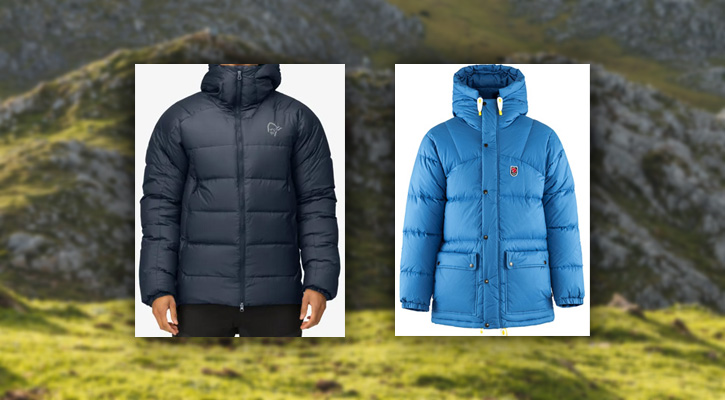
Norrøna and Fjällräven were both founded by outdoor enthusiasts looking to create high-quality, long-lasting products suited for challenging conditions.
Norrøna was founded in Norway in 1929 while Fjällräven was established in Sweden in 1960.
Since then, they have gained worldwide recognition for pioneering technical fabrics and focusing on functionality, sustainability, and design.
But, which is better for outdoor adventures? Let’s explore their histories, materials, products, and prices to answer this question!
Contents:
1. Norrøna Outdoor Gear
History of the Brand
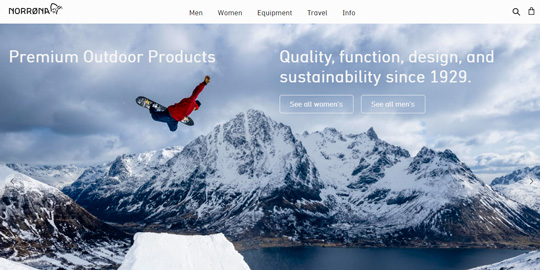
Norrøna official website
In 1929, Norwegian nature enthusiast Jørgen Jørgensen wanted to find durable outdoor gear suitable for Norway‘s challenging weather. This marked the genesis of Norrøna as he began crafting outdoor gear such as leather items, canvas backpacks, and cotton clothing.
In 1948, the reins of the company were taken over by the second generation Jørgensen, Bjarne Jørgensen. Over the ensuing years, Norrøna diversified its product range and shifted its focus to technical equipment and mountain gear.
The year 1971 saw the third generation Jørgensen, Ole Jørgen Jørgensen, assume the managerial role, accompanied by the hiring of engineer Tomas Carlstrøm to aid in the development of backpacks and mountain tents.
Throughout the 1970s and 80s, Norrøna gained popularity for innovative products and sponsoring expeditions. Notable achievements included the introduction of the first tunnel tent in 1972, the first Gore-Tex jacket in Europe in 1977, and the provision of gear for the winter ascent of Trollveggen in 1979.
In 2000, design became Norrøna’s third cornerstone, with a focus on uncluttered, practical design. The mid-2000s witnessed the brand’s international expansion, marked by the launch of new collections and the opening of stores in Europe and North America.
Sustainability was integrated as Norrøna’s fourth cornerstone in 2015, with the company committing to transparency and allocating 1% of sales to environmental programs.
Today, spanning four generations, Norrøna remains a family-owned enterprise based in Norway. Under the leadership of current manager Jørgen Jørgensen, the company persists in innovating technical outdoor gear steeped in Norwegian heritage.
Don’t miss:
9 Brands like Norrøna: Our Best Alternatives
Norrøna vs RAB Outdoor Gear: Which is Better?
Materials, Fabrics, and Production Process
Norrøna prioritizes the use of high-performance, sustainable materials in its products. They use eco-friendly fabrics such as organic cotton, recycled polyester and nylon, and down insulation that adheres to the Responsible Down Standard (RDS).
Additionally, they utilize Bluesign-approved fabrics, demonstrating their commitment to transparency and sustainability. Norrøna actively participates in initiatives like the Fashion for Good organization to advance sustainability.
Through their 1% for Nature program, they contribute 1% of annual sales to environmental causes and organizations dedicated to preserving nature.
Norrøna focuses on developing technical products while pushing the boundaries of eco-friendly materials to minimize environmental impact. Their dedication to both performance and the planet is evident in their leadership in sustainable outdoor apparel and gear.
Like many other leading outdoor brands, Norrøna employs innovative fabric technologies and materials, including various versions of Gore-Tex membranes, Polartec performance fabrics, and PrimaLoft synthetic insulation.
The natural down insulation originates from the Pyrenees mountains in France, and the treatment of the birds complies with European standards.
The video will be loaded from YouTube.com, a third party. If you play it, you accept their terms of service, and their use of cookies.
Read also:
Norrøna vs Jack Wolfskin: Which is Better?
Norrøna vs Arc’teryx Women’s Ski Jackets: Which Brand To Choose?
Where is Norrøna outdoor gear made?
Norrøna’s outdoor equipment is made in various facilities based in Europe and Asia. Currently, the company uses factories in Lithuania, Portugal, Spain, Denmark, and Sweden in Europe, and Vietnam, China, and Thailand in Asia. (source)
Recommended Products
Norrøna trollveggen down 850 Men’s Jacket
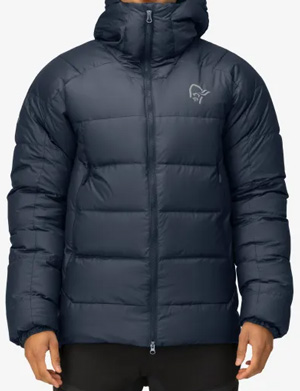
Image: norrona.com
Check it out at Norrona.com
The Norrøna trollveggen down 850 Men’s Jacket is a high-quality mountaineering down jacket constructed with aeroDownproof face fabric and packed with RDS-certified 850+ fill power down to deliver exceptional insulation while maintaining a lightweight design.
It includes windproof Pertex Quantum 30D 100% recycled polyester face fabric, 100g PrimaLoft Gold insulation in the pockets and on the shoulders, hand warming pockets, an insulated hood, and an extended back length for optimal protection.
Read also: 10 Norwegian Jackets and Clothing Brands that You’ll Love
Norrøna lyngen 40L Pack
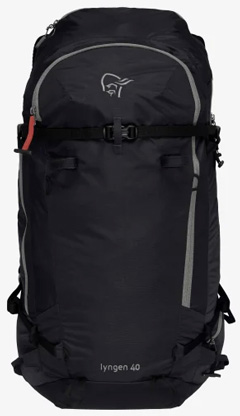
Image: norrona.com
Check it out at Norrona.com
The Norrøna Lyngen 40L Pack is a robust and lightweight backpack for ski touring, mountaineering, and trekking. Constructed from resilient ECONYL® material, this pack is not only durable but also environmentally friendly.
It boasts water-resistant properties, high-quality YKK zippers, and a well-ventilated back with an open-back design. This pack is equipped with dedicated compartments for avalanche gear, crampons, and a rope, and is also ideal for carrying ski and snowboard equipment.
Its features include compression straps, a hip belt with a pocket, ice ax attachments, and a chest strap for added functionality. Additionally, the adjustable shoulder straps are designed with a 3D construction to enhance breathability.
Read also: 3 Best Norwegian Backpack Brands: Our Top Picks
Prices
Norrøna’s customers express a sense of being well-supported and capable of optimal performance in the harshest environments, thanks to the brand’s meticulous engineering and design.
However, the initial investment for Norrøna’s gear is high, with their jackets priced between $300 and $1000, and backpacks ranging from $100 to $700.
Are Norrøna products worth the price?
In our opinion, Norrøna’s products represent excellent value for those engaged in demanding outdoor pursuits and seeking durable gear. The brand employs cutting-edge technology to offer warmth and comfort. They also offer a range of vibrant colors not commonly found in competing brands.
However, for less intense outdoor activities or beginners in a specific sport, exploring more budget-friendly brands may be a better option.
Learn more: Why is Norrøna so Expensive? Are Their Jackets Worth It?
2. Fjällräven Outdoor Gear
History of the Brand
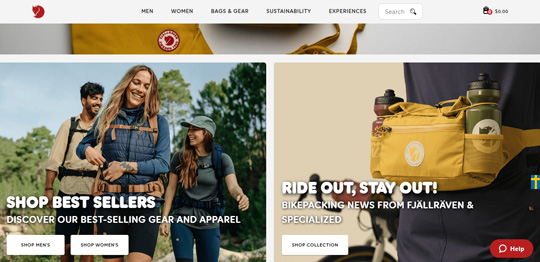
Fjällräven official website
Fjällräven, a Swedish company, derives its name from the Arctic Fox, which is also elegantly depicted in its logo.
The brand was founded in 1960 by Åke Nordin, an avid hiker who aimed to create a backpack capable of carrying heavy loads without causing back strain. After successfully developing his ideal backpack, he began local sales.
Recognizing the demand for lightweight, supportive backpacks, he established Fjällräven to address this market need. In the 1970s, the company introduced the Kånken backpack to alleviate back issues experienced by Swedish schoolchildren due to inadequate book-carrying backpacks.
Today, the Kånken backpack is a popular product, not only among schoolchildren but also as a fashionable daily accessory.
Additionally, the brand offers notable items such as the Expedition jacket, Greenland jacket, and Nuuk parka.
Over time, Fjällräven has introduced numerous other products for outdoor pursuits, including insulated winter jackets, waxed jackets, hiking and casual backpacks, hiking pants, sleeping bags, and camping tents, providing a comprehensive range for outdoor adventures.
Don’t miss:
9 Outdoor Brands like Fjällräven: Our Favorites
Fjällräven vs The North Face (Outdoor Gear Comparison)
Materials, Fabrics, and Production Process
Fjällräven has gained renown for crafting durable jackets and backpacks with a long lifespan, making it a favored choice among outdoor enthusiasts. The brand’s meticulous production process is characterized by a keen attention to detail, reflected in the quality of its products.
The materials, including the breathable and resilient G-1000 fabric, are thoughtfully chosen. This fabric, featured in Fjällräven’s jackets, can be waxed for adaptability in diverse weather conditions.
The company ethically sources its natural down from ducks and geese for use in their winter parkas and insulated jackets, providing effective insulation in extreme temperatures.
Fjällräven also incorporates sustainable practices by utilizing recycled polyester in a significant portion of their products, including technical fabrics like Eco-Shell, which offers lightweight and weather-resistant qualities.
The video will be loaded from YouTube.com, a third party. If you play it, you accept their terms of service, and their use of cookies.
Must read:
Is Fjällräven Ethical and Sustainable?
Fjällräven vs Patagonia Outdoor Gear (Which is Better?)
Where is Fjällräven outdoor gear made?
Fjällräven produces most of its gear in different Asian nations, such as China, South Korea, and Vietnam. (more information here)
Recommended Products
Fjällräven Expedition Men’s Down Jacket

Image: fjallraven.com
Check it out at Fjallraven.com
The renowned Expedition coat, a timeless item from the 1970s, is made from Nylon and Polyester and packed with ethically sourced down insulation. True to its name, it is an exceptionally cozy coat, ideal for demanding expeditions.
The substantial cost of the coat mirrors its outstanding craftsmanship, and we anticipate nothing less for this category of gear.
Read also: Fjällräven vs Columbia Outdoor Gear (A Comparison)
Fjällräven Classic Kånken Backpack
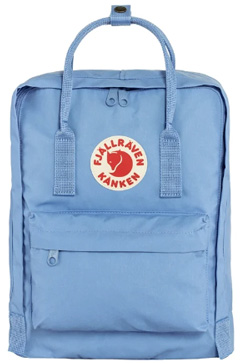
Image: fjallraven.com
Check it out at Fjallraven.com
Crafted from the robust and resilient Vinylon F material (100% vinylal), the Kånken backpack offers outstanding durability.
Its ability to repel water and meticulous craftsmanship enhance its appeal. Besides being suitable for school use, this backpack is also ideal for everyday casual use in your city, for books, laptops, and other objects.
Read also: 7 Backpack Brands from Sweden: Our Favorites
Prices
Fjällräven is a mid-to-high-end label, offering items like backpacks ranging from $60 to $400 and jackets priced from $150 to $1000. Among their collections, the insulated winter parkas are the priciest. The Expedition coat that we saw above, for example, costs around $750!
Are Fjällräven products worth the price?
We appreciate their minimalistic styles, and the longevity of their items is greatly appreciated by many customers. The insulation is among the best, and the construction is very durable. So, in our opinion, Fjällräven is worth it!
Learn more: Why is Fjällräven so Expensive? Are Its Products Worth It?
3. Which is Better? Norrøna or Fjällräven?
While both are excellent, we have to make a decision, so here are our considerations to help with your choice:
Heritage: Norrøna is Norwegian and was founded in 1929, while Fjällräven is Swedish and was born in 1960. So, both have long and rich histories of making gear for Nordic outdoor conditions.
Materials: Both use durable, water-resistant fabrics. While Norrøna uses industry-standard materials such as Gore-Tex fabric and PrimaLoft and Polartec insulation, Fjällräven has its proprietary range of materials like G-1000 and Eco-Shell fabrics, and G-Loft Supreme insulation.
Style: Norrøna tends to have a more technical, athletic style and focus on performance. Fjällräven has a classic Scandinavian style that emphasizes functionality over flashy design, with colors that are more muted earth tones.
Packs and Bags: Both make very durable, well-designed backpacks. Fjällräven’s Kånken backpack is iconic, but they also have technical packs. Norrøna makes technical backpacks optimized for skiing, hiking, and climbing.
Outerwear: Both are renowned for hard-wearing jackets and pants. Norrøna may have a slight edge for more technical alpine layers. Fjällräven is great for all-around outdoor use.
Prices: In general, Norrøna is more expensive for serious outdoor and technical apparel. Fjällräven, while also a premium brand, has lower prices making it more accessible for both high-quality gear and everyday wear.
Sustainability: Both pursue sustainable practices, use recycled fabrics, and are committed to reducing emissions.
In the end, for more technical activities, Norrøna’s gear would be our recommendation. Fjällräven would be an excellent choice for more general outdoor use.
Let us know what you think in the comments below.
Read next: 10 European Down and Puffer Jacket Brands for Winter
